
Home to dramatic gorges, mysterious sinkholes, cascading waterfalls and flowing underground rivers, Guizhou is a mountainous province with an unforgettable karst landscape in southwest China. Maolan National Nature Reserve in the province enjoys a unique verdant karst forest, hailed as "the emerald on the Earth's belt."
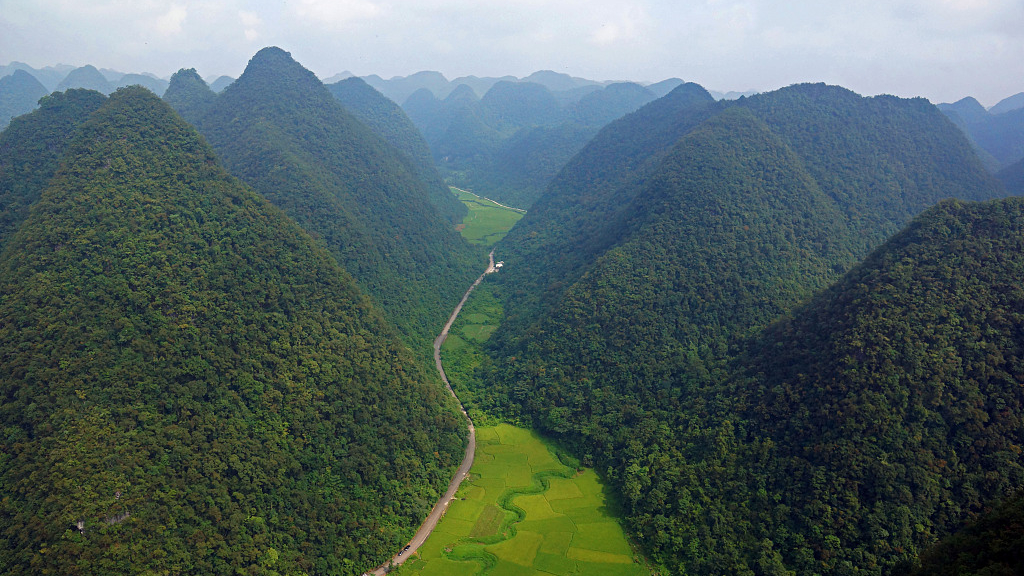
Karst forests in Maolan National Nature Reserve in southwest China's Guizhou Province. /VCG Photo
Due to island-shaped karst landscape and complex habitat in Maolan, many endemic species here can be found nowhere else, making the place a natural gene pool. Though over 70 percent of the karst forest is covered with bare rocks, the little limestone soil has abundant organic material, nitrogen and phosphorus nutrients, providing a fertile ground for orchids.
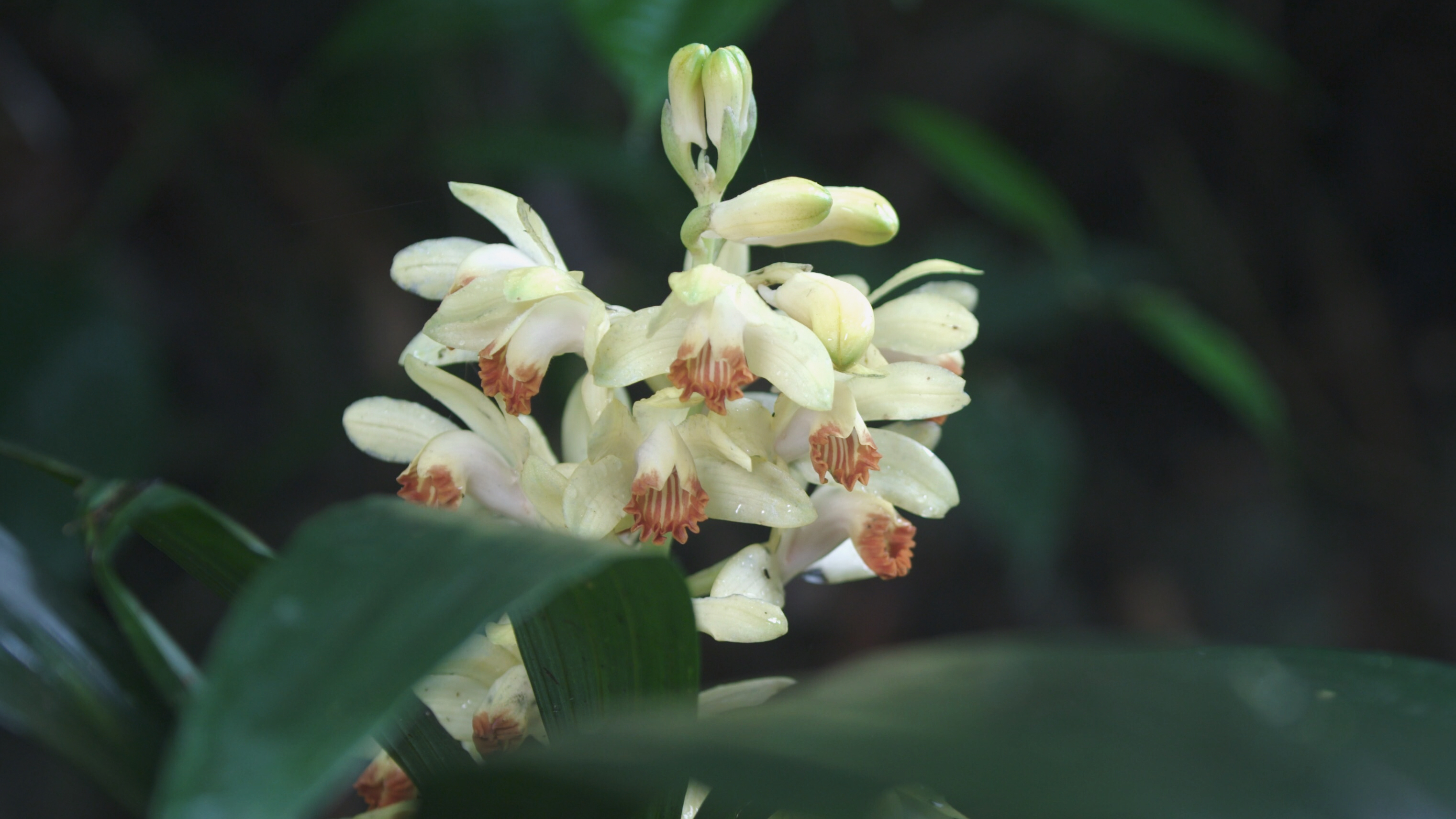
Phaius flavus in Maolan National Nature Reserve in southwest China's Guizhou Province. /Credit to CGTN Nature film crew
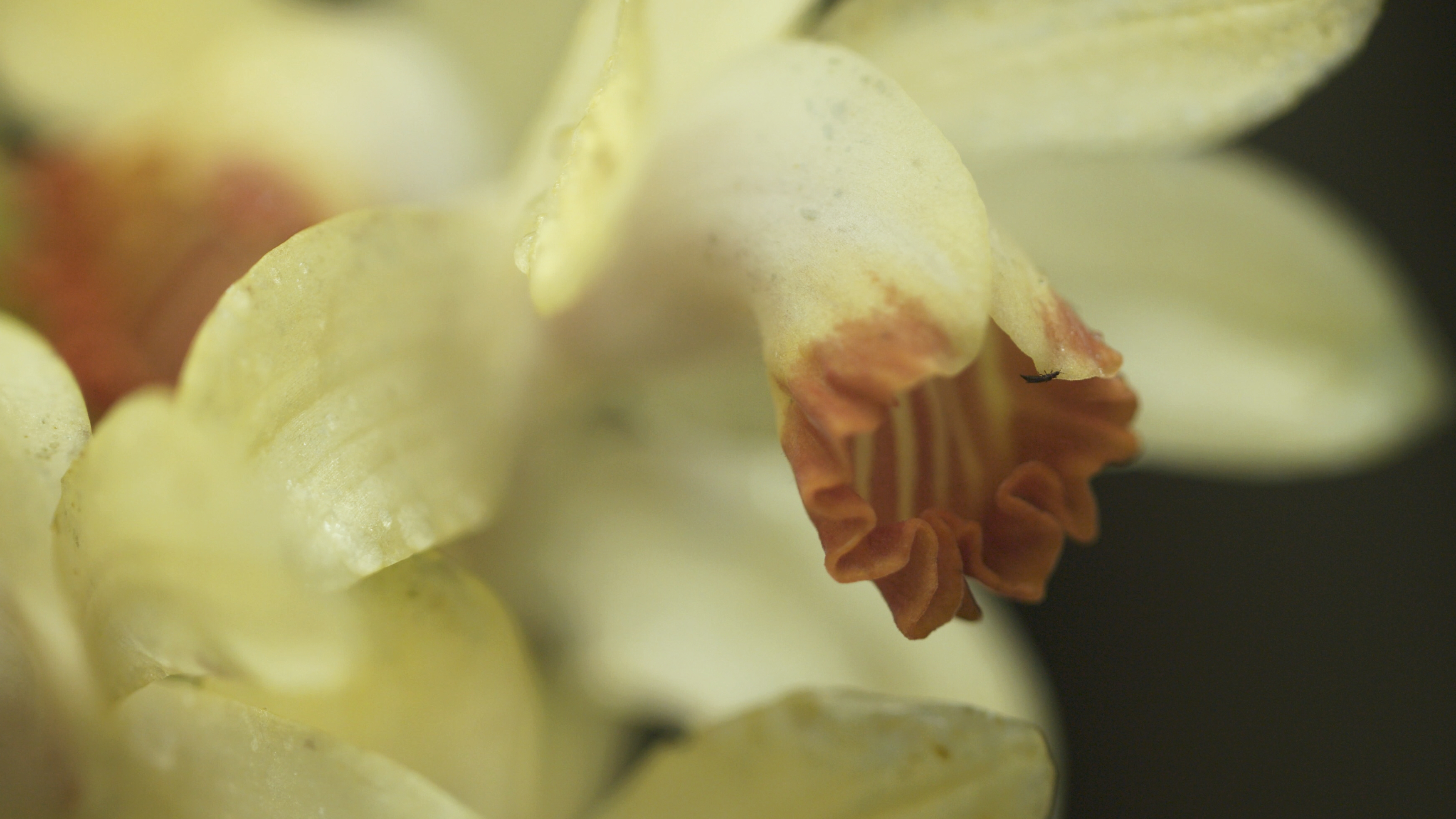
Closeup of Phaius flavus in Maolan National Nature Reserve in southwest China's Guizhou Province. /Credit to CGTN Nature film crew
Until now, 85 wild orchid species are found in the reserve. Some epiphytic orchid species grow on rock surfaces, some thrive in crannies in the rocks filled with dry branches and fallen leaves and some even bloom on hilltop with strong sunlight. Among them, Paphiopedilum emersonii and Paphiopedilum malipoense are critically endangered.
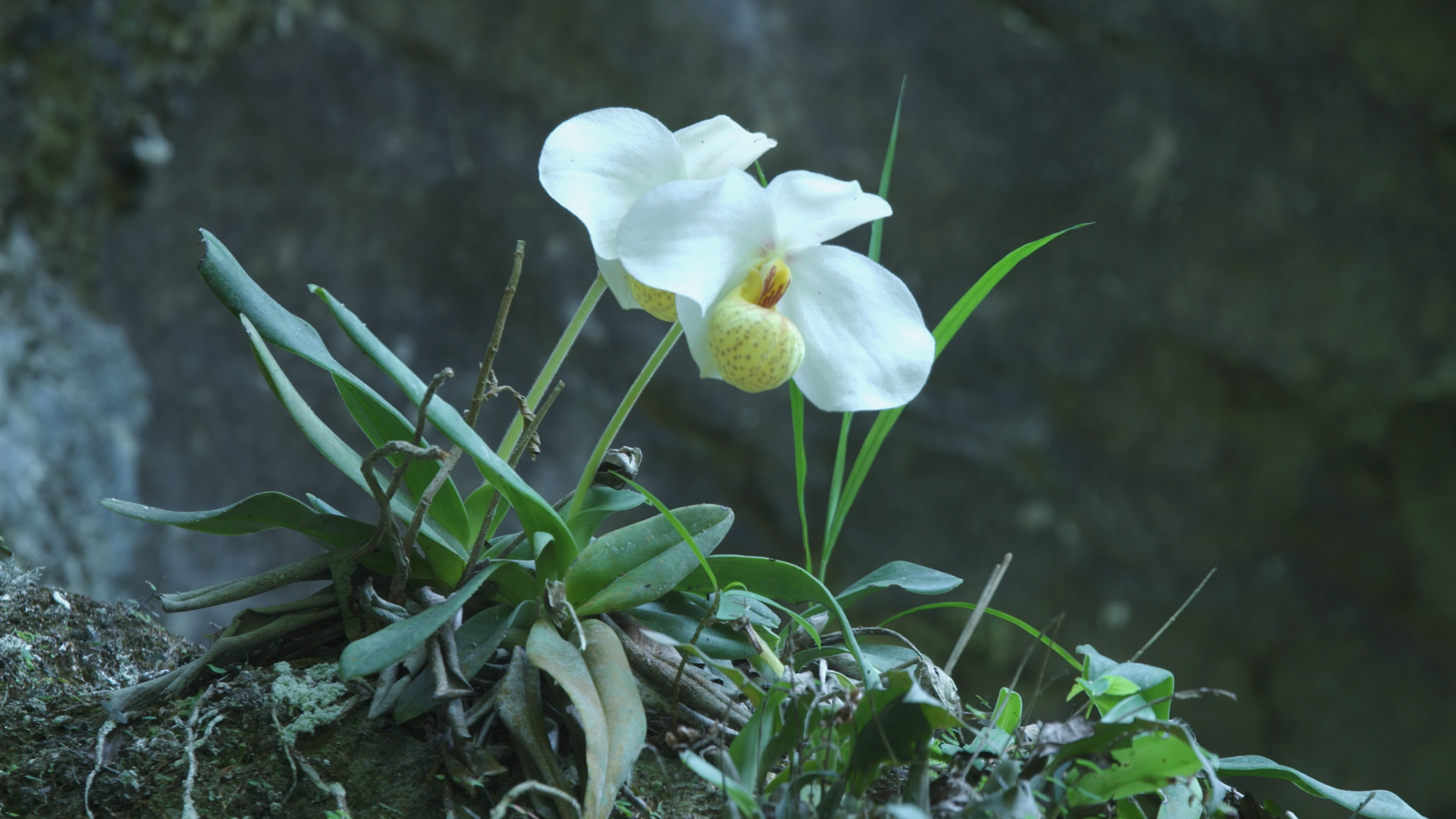
Paphiopedilum emersonii in Maolan National Nature Reserve in southwest China's Guizhou Province. /Credit to CGTN Nature film crew
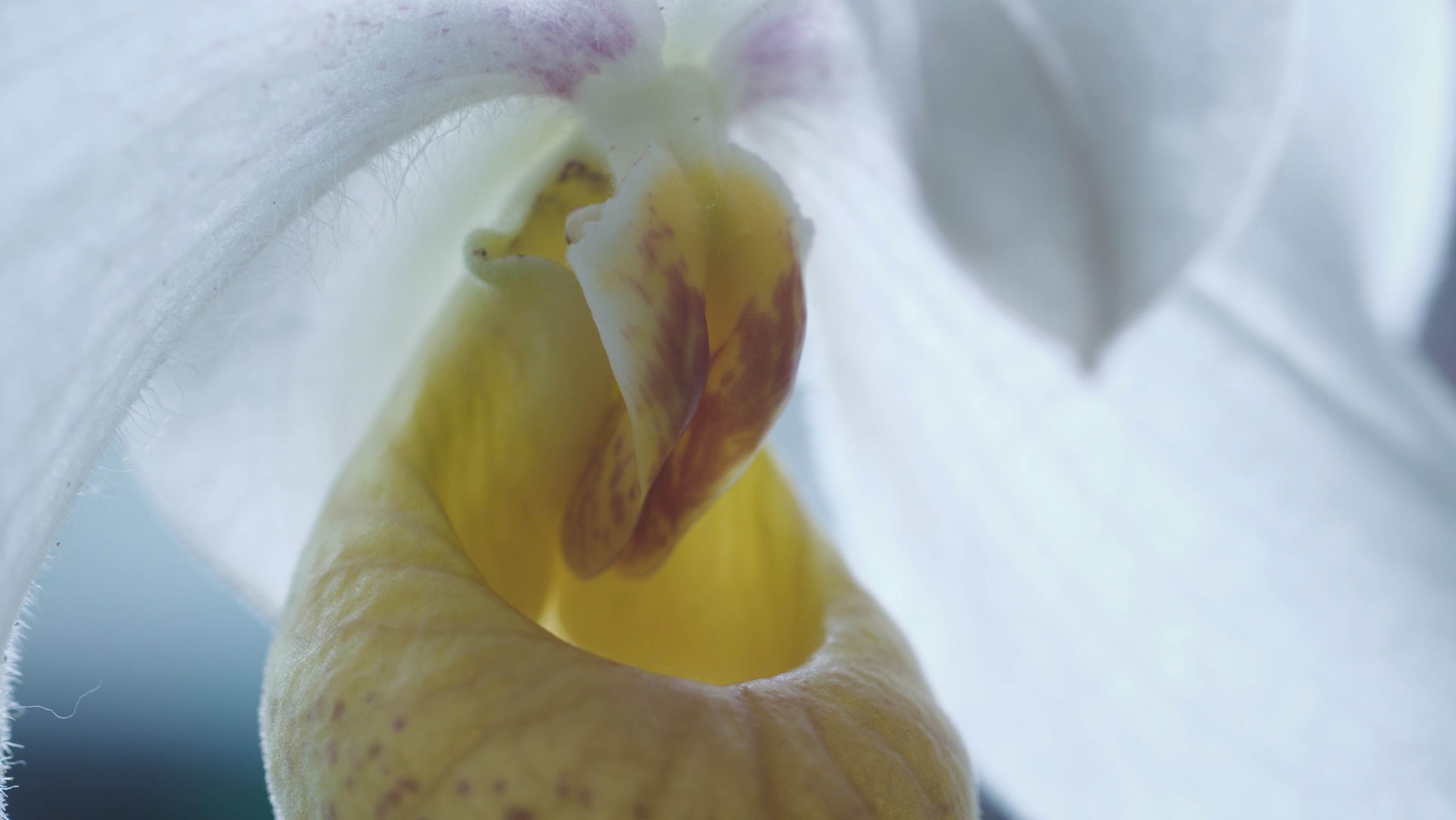
Closeup of Paphiopedilum emersonii in Maolan National Nature Reserve in southwest China's Guizhou Province. /Credit to CGTN Nature film crew

Paphiopedilum emersonii in Maolan National Nature Reserve in southwest China's Guizhou Province. /Credit to CGTN Nature film crew
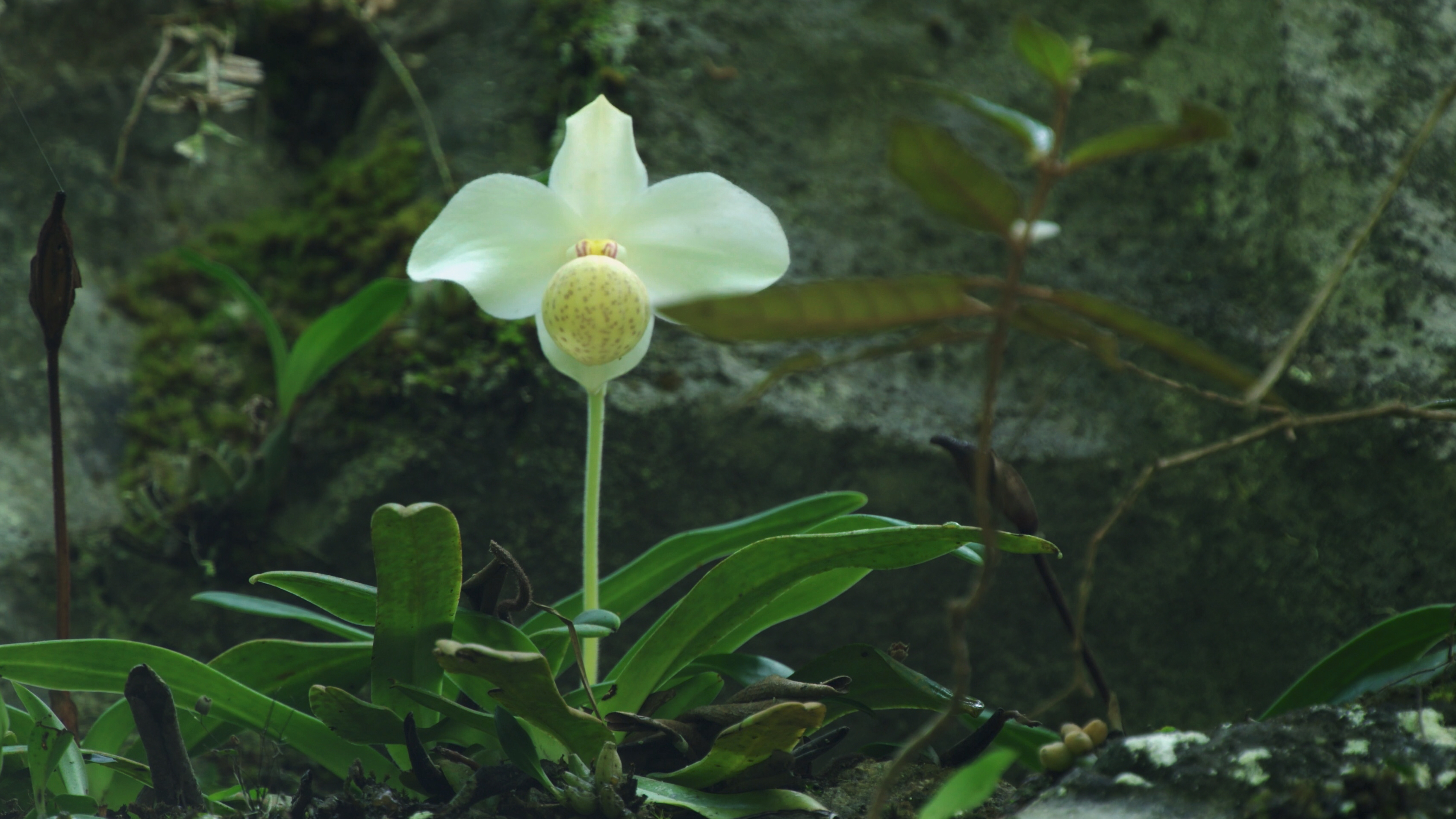
Emerson's Paphiopedilum (Paphiopedilum emersonii) in Maolan National Nature Reserve in southwest China's Guizhou Province. /Credit to CGTN Nature film crew
With white petals and subsquare yellow lip, Paphiopedilum emersonii grows on steep cliffs at altitudes between 430 and 1,000 meters. The orchid can only be found in the karst forest in Guizhou Province and Guangxi Zhuang Autonomous Region. According to studies, there are less than 600 of them living in the wild due to its dependency on the karst environment. Now, it is under the first-class state protection in China.
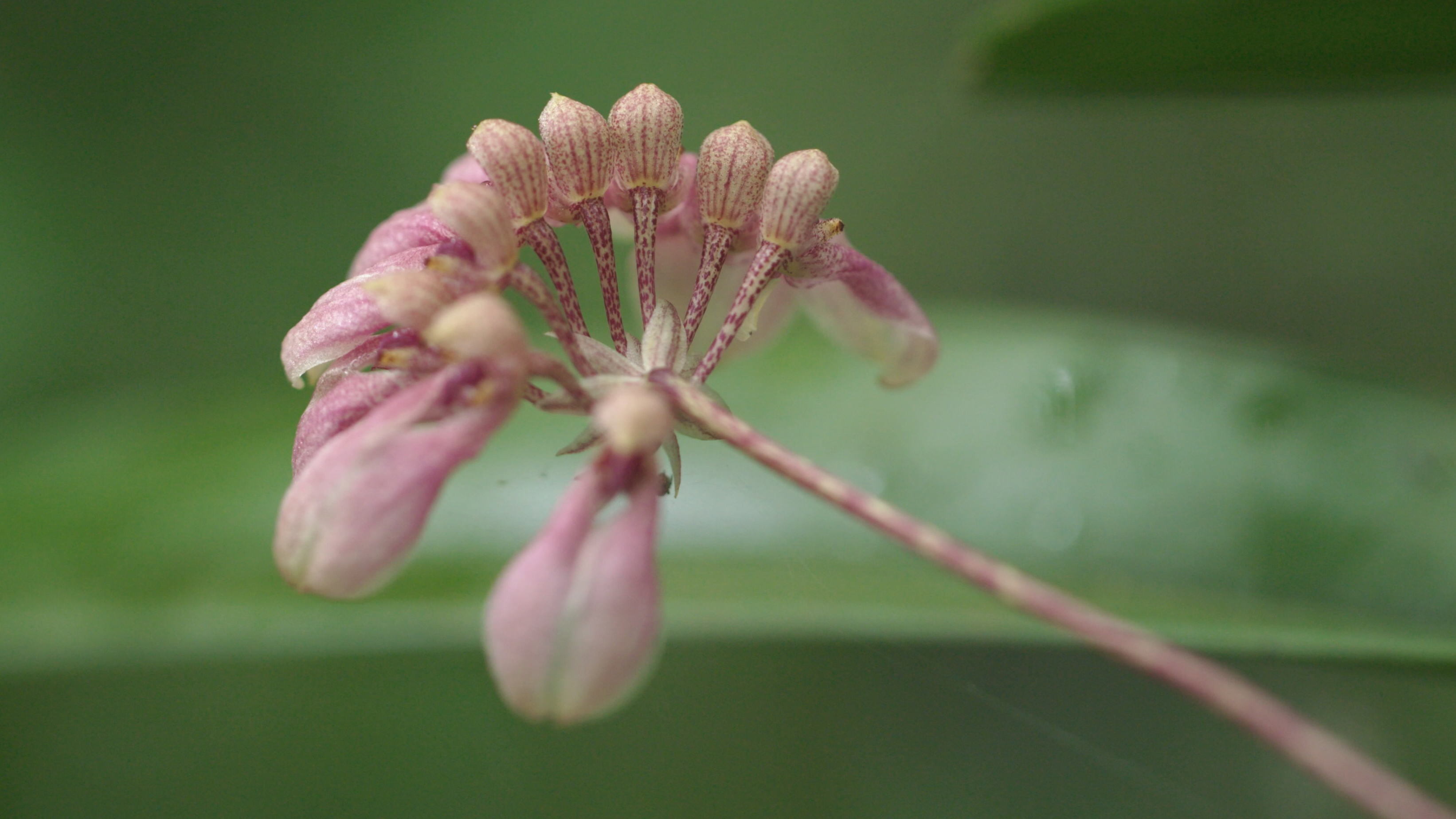
Bulbophyllum andersonii in Maolan National Nature Reserve in southwest China's Guizhou Province. /Credit to CGTN Nature film crew
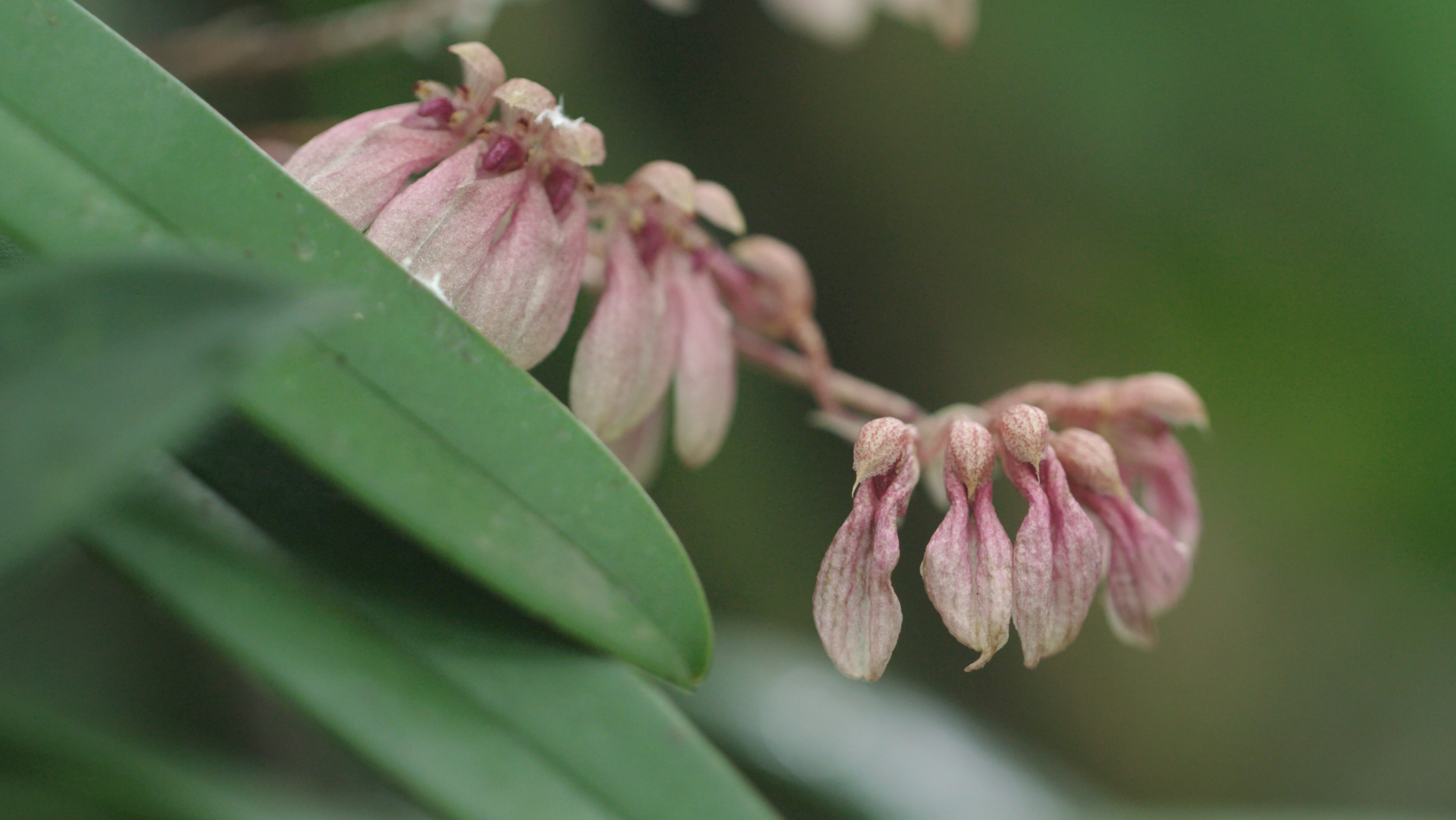
Bulbophyllum andersonii in Maolan National Nature Reserve in southwest China's Guizhou Province. /Credit to CGTN Nature film crew
Unlike most orchids that favor humid environments, Bulbophyllum andersonii is pretty drought-resistant. This epiphytic orchid grows on the karst limestones. The pinkish sickle-shaped flowers consist of a tiny opened parasol. The flower has a surprisingly long blooming period, lasting from February to October.
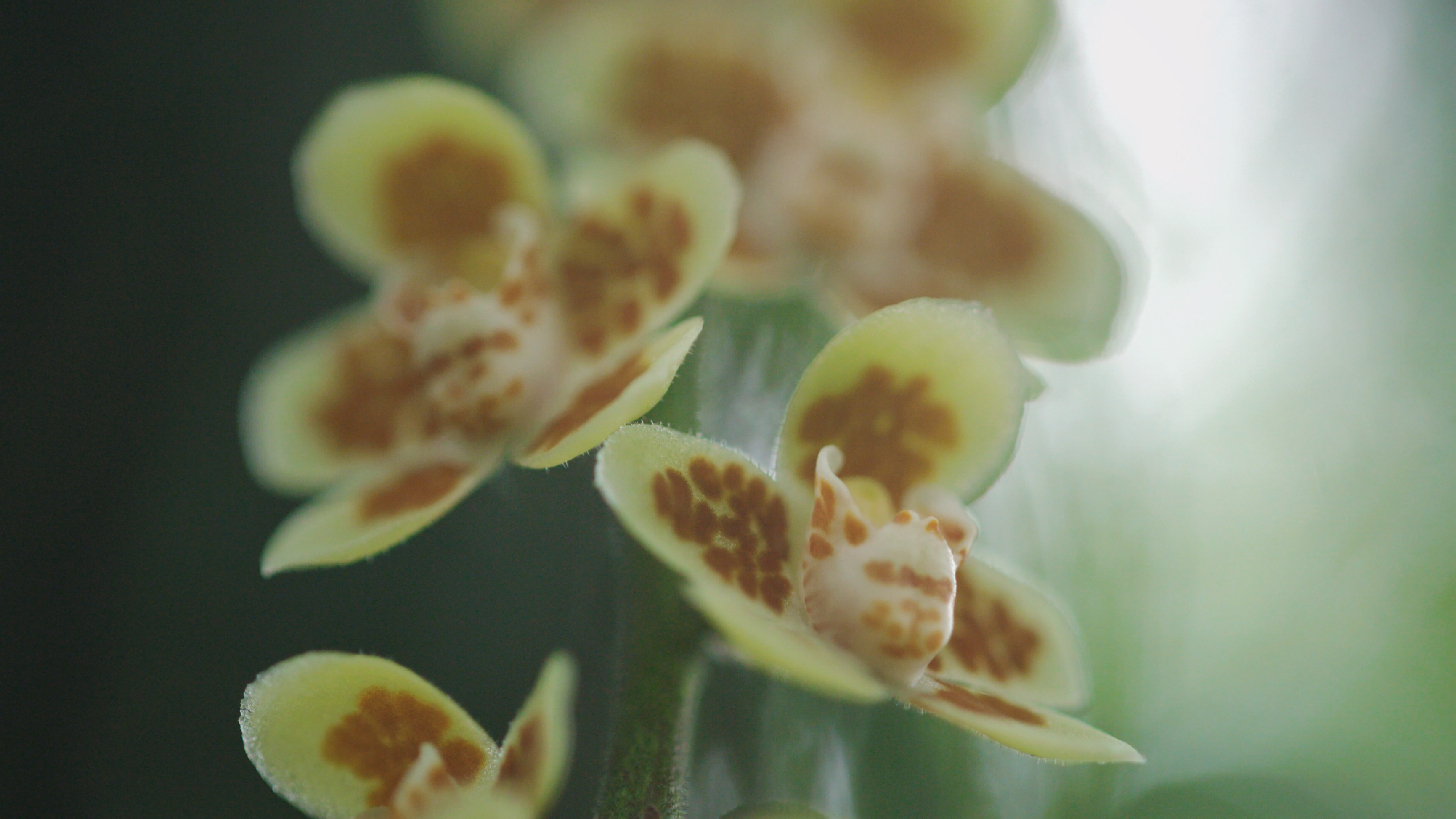
Chiloschista yunnanensis in Maolan National Nature Reserve in southwest China's Guizhou Province. /Credit to CGTN Nature film crew
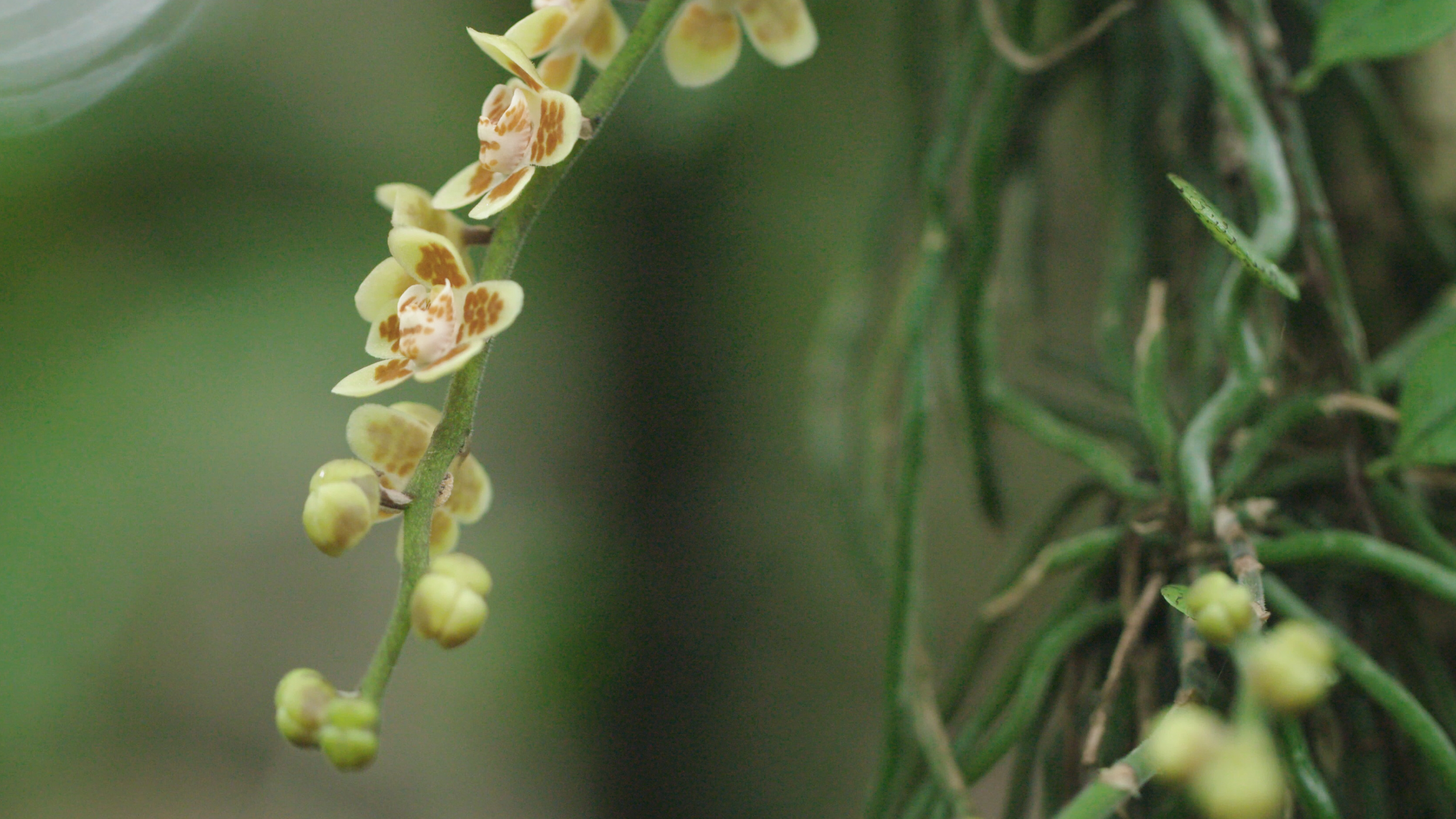
Chiloschista yunnanensis in Maolan National Nature Reserve in southwest China's Guizhou Province. /Credit to CGTN Nature film crew
Though the karst forest is a harsh living environment, orchids find their way out on limestones. In China, orchids have been a staple throughout its long history. Poets praise orchids for their fragrant flowers and blooming in the remote deep valley. They are the symbol of elegance and nobility, and loved around the world.
China's Flora Tour
From the wetlands along the coast to the dense rainforests hidden in the southwest of China, all boast an array of plant species. In this series, we will go on a tour to learn about some of the most representative flora in different provinces and see how they live in harmony with the local geography and climate.
(Cover image provided by CGTN Nature film crew, designed by CGTN's Gao Hongmei.)
(If you want to contribute and have specific expertise, please contact us at nature@cgtn.com)

Copyright © 2018 CGTN. Beijing ICP prepared NO.16065310-3
Copyright © 2018 CGTN. Beijing ICP prepared NO.16065310-3